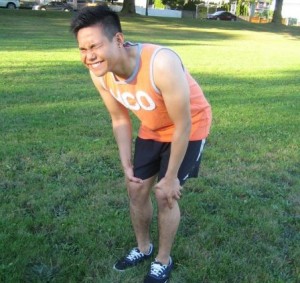Hip flexors are group of muscles that help the thigh in bending forward and towards the joint of the hip. The muscle of the hip bone is connected to the thigh bone which helps in lifting the thigh while walking and running. When these muscles are strained, it will result to pain in the groin and there is difficulty in walking or lifting the leg. Strain on the hip flexor muscles happens when more of the muscles are ruptured or overstretched.
An impulsive contraction of hip flexors will result to damage of flexor muscles of the hip which are common in people who are playing sports such as kick boxing and soccer. These people are susceptible to develop hip flexor strain.
Causes of hip flexor strain
- Severe and natural contraction of the muscles such as a abrupt kick or pivoting while running during soccer. Strenuous sports put individuals at high risk for hip flexor strain.
- Repetition or overuse of some activities is a common cause.
- Performing exercises without proper warm up
- Fall or vehicular accidents
Pain can be severe and irritating which can be felt in the area of the groin where the thigh is connected with the joint of the hip - Living a sedentary lifestyle can result to a weakened muscle including hip flexors. Sitting for long periods of time in one place makes the flexors muscles tight and stiff.
- Poor posture
- Improper training
Symptoms
- Pain can be severe and irritating which can be felt in the area of the groin where the thigh is connected with the joint of the hip
- Sudden development of pain
- There is difficulty walking or lifting the leg in a vertical direction or folding the leg from the joint of the hip.
- The affected person limps when walking due to the pain.
- Sometimes, there is bruising and inflammation of the muscle.
- The affected area is tender when touched
- When the hip flexor muscle is ruptures, a bulge can be seen on top of the thigh
- When the condition becomes severe, there is bruising and swelling.
Treatment
- Getting enough rest is the first and essential requirement in managing a hip flexor strain. Avoid performing activities that can cause pain such as running or lifting the thigh for a few days. Light walking helps with the condition. Avoid performing any sports or activity that can make the condition worse.
- Apply an ice pack on the affected area. You can place ice cubes in an ice bag and wrap it in a towel and then place over the affected area for at least 5-10 minutes for 4-5 times every for the first 2 days and gradually reduce the application. The ice pack works by reducing the pain and inflammation.
- Take the prescribed anti-inflammatory medications to lessen the pain and inflammation.
If pain is already minimized and the injury is in the healing process, start performing rehabilitation exercises with the help of a physical therapist. The exercises are needed to increase the strength of the affected muscle

